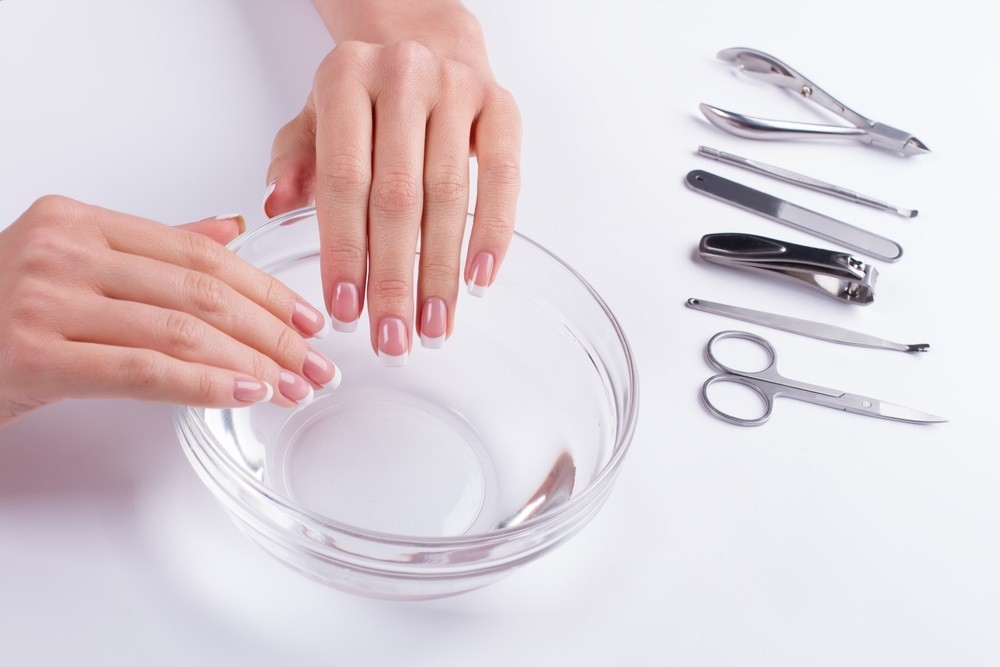Contents

Having strong, healthy nails gives you confidence, whether you rock bright lacquer or choose a more understated look. Like putting on a nice pair of underwear just because or splurging on some fantastic socks to wear beneath your boots, healthy nails (and even the consequences of good nail cuticle care) are one of those less obvious confidence boosts.
Maintaining healthy nails is a worthy investment whether you view it as a kind of self-care, an indulgence, or simply normal maintenance. The good news is that maintaining healthy nails just takes time, not money.
In most cases, inexpensive nail tools are not as effective as simple lifestyle behaviors in fostering healthy, long-lasting nails. However, if you want healthy nails, you’ll need to stop harmful behaviors like using your nails as a makeshift pocket knife. We asked professionals about the daily dos and don’ts of nail care to bring you some actionable, helpful recommendations. If you follow these instructions, you will soon notice that your nails are stronger and longer than before. Proper nail care with Maby blog.
Use nail moisturizer
The secret to beautiful skin is moisturizing, although this step is frequently skipped while caring for nails. Many things might contribute to dry, brittle nails, but ultimately, they’re a plea for water, so make sure your nails are getting enough of it as the first step in your nail care routine. Pay special care to your fingernails when you moisturize your hands. There are several nail care solutions that claim to moisturize your nails, but the truth is that hydrating them is only half the battle.
Avoid touching your cuticles
Cuticles are often attacked by being sliced, pushed back, or removed, yet they are not harmful. The cuticle is “the nail’s natural protective seal,” says Dana Stern, MD, a board-certified dermatologist and nail expert. Even if you go to a professional manicure salon, tampering with your cuticles can do more harm than good. According to Dr. Stern, the nails are more susceptible to infection if the cuticle is damaged.
Cosmetic dermatologist Dr. Michele Green says that unattended cuticles can cause a snowball effect. “When your cuticles get dry or injured, it can injure the nail bed and affect the way your nails grow out,” Dr. Green adds. She suggests putting cuticle oil or cream on your nails to keep them healthy and prevent breakage (like Deborah Lippmann’s Cuticle Oil, sephora.com, $20).
Stay away from any water
You shouldn’t stop washing your hands or start showering with gloves on, but you should be aware of ways to limit the amount of time your nails spend in water, as this can cause them to become brittle. (Wet hair is especially susceptible; the same care you use while managing wet hair can be applied to caring for your nails.) Wear protective gear, such as gloves, when handling damp tasks like washing dishes or landscaping.
Did you know that after a hot bath, your nails become pliable and soft? Think about it: A nail is a sponge in this respect. Dr. Stern explains that nails are able to absorb water at a rate one thousand times higher than the skin. She warns that overexposure to water can cause the nail cells (called onychocytes) to become brittle, peel, and shatter.1
This is also why you shouldn’t soak your nails before your manicure. According to Dr. Green, not only does this make your nails more susceptible to infection, but it also prevents nail paint from adhering properly and lasting as long.
Use caution
Board-certified dermatologist and expert on treating skin of color Susan C. Taylor, MD, says gentle care is the best way to treat your nails. To begin, Dr. Taylor suggests not doing something as potentially harmful as digging under your nails. She explains that some people use the sharp end of a nail file to clean under their nails. “That’s not a good idea because it can cause your nail plate to separate from the bed beneath it, which can lead to a bacterial fungal infection,” she said.
Similarly, even though it seems like a good idea at the time, you shouldn’t use your nails in place of tools. (There are many other novel approaches to opening a Coke can.) You should remove acrylic or gel manicures properly if you ever decide to treat yourself to one. If you want to treat your nails like an expert at home, invest in a high-quality gel nail polish kit. Dr. Taylor warns against removing acrylic or gel nails by pulling them off because doing so removes layers of the nail and the nail plate, weakening the nail.
Manicure your nails as carefully as you would your hair
The old golden rule has been replaced with this. Since keratin proteins are found in both hair and nails, treating them similarly makes sense. According to Dr. Stern, excessive processing can dry out hair and harm nails. Similar to how coloring, chemicals, and heat styling can damage hair, so can the use of nail paint remover, gels, and acrylics.
Dry and brittle nails can be improved by drinking more water, just as frizzy hair and split ends. There is no such thing as second-day hair, but treating your nails like there are certain guidelines for washing, caring for, and using them will help them stay in as good of form as your hair.
The importance of staying hydrated cannot be overstated. “Just like you would condition your hair with a leave-in or rich conditioner, I would condition your cuticles as well to promote healthy, growing nails,” Dr. Green explains.
Maintain a weather eye
The harshness of winter weather may wreak havoc on your skin, hair, and nails. Dr. Stern warns that the sudden change in temperature when moving from outdoors to indoors might further weaken nails that have already become brittle due to the cool, dry weather. She believes the repeated contraction and expansion of nail cells as they go from a warm indoor environment to the cold outside can weaken the connective tissue connecting the cells and eventually cause the nails to break. To keep your hands and nails from being dry and brittle throughout the winter, it’s a good idea to wear gloves at all times and moisturize, moisturize, moisturize.
Reevaluate your items
Choose a glass or crystal nail file (like OPI’s Crystal Nail File at ulta.com, $15.19) over an emery board, which can “create microscopic tears in the nail that lead to splits and peeling,” as Dr. Stern puts it.
If at all possible, you should refrain from using nail paint remover. Non-acetone removers (like ella+mila Soy Nail Polish Remover, available at target.com for $11.49) with nourishing oils and ingredients are preferable because most of us won’t give up the pleasure of a great manicure.
Use a soft nail brush (like the Luxxii Fine Handle Grip Nail Brush, available from amazon.com for $6.45) to clean under your nails instead of a filer, which Dr. Taylor recommends against. Or you might be resourceful and utilize a spare toothbrush you already have.
Products that promote nail growth? Skip them. “So many of the so-called nail treatment or nail growth products on the market are in reality clear nail polishes with marketing additives that have no scientific validity,” explains Dr. Stern.
Wait for your nails to grow
Nail biters understand the sense of accomplishment that comes when their nails eventually extend past their fingertips. Maintaining healthy nail care routines takes time and effort. However, learning how to strengthen your nails should take precedence over the mystery of rapid nail growth.
Nail care that builds strength over time might result in longer, healthier nails. To prevent your nails from becoming brittle and breaking again, maintain them short until their strength returns. Only then will they be able to grow out. In addition, please refer to: 5 Reasons why nail care is important.
